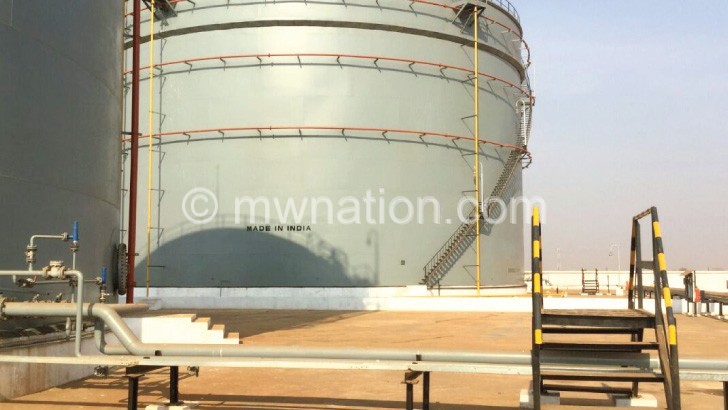Fuel reserves dream nearing fruition
The ambitious dream of increasing Malawi’s fuel cover to 60 days is slowly, but surely, nearing fruition although questions linger on the financing of the accumulation of the needed fuel reserves.
National Oil Company of Malawi (Nocma), a government agency that will be managing strategic fuel reserves in the country’s three regions, with a combined capacity of 60 million litres, has confirmed the commissioning of 25 million litres fuel reserves at Kanengo in Lilongwe in December.
The fuel reserves in Lilongwe will increase the country’s fuel cover from the current 10 days to 35 days, which will ensure security of fuel supply in case of any disruptions.
While Treasury spokesperson Nations Msowoya yesterday observed that the financing model of fuel reserves is under discussion, Nocma spokesperson Telephorus Chigwenembe said they sent a proposal to government through the Public Service Reforms Commission (PSRC) to implement some reforms in the oil industry.

The model entails the country importing fuel in one order or what is called Bulk Procurement System (BPS) with Nocma being responsible for that task.
Chigwenembe said PSRC approved the reforms and is currently negotiating with concerned parties following
Caption: Picture credit: different views that the arrangement had attracted.
In a Letter of Intent to International Monetary Fund (IMF) dated June 2 2016, Minister of Finance, Economic Planning and Development Goodall Gondwe noted that a method is required to finance the accumulation of fuel reserves, adding that the challenge will be to amend the fuel import regime in a manner that utilises the new fuel tanks without introducing new sources of risks.
He wrote: “Over the next fiscal year, the fuel import regime will remain unchanged, while we carefully evaluate possible amendments aimed at enhancing security and efficiency.
“To this end, we will examine ways and means of filling the new fuel tanks in a cost effective and transparent manner, taking full advantage of the technical assistance on offer from various donors, including the World Bank, for this operation.”
In the process, Gondwe said government will examine both private sector and public sector-led solutions, including the option of a government-run BPS, stressing that discussions will be held in an open and transparent manner, with full participation of the private sector.
The fuel reserves are a brainchild of former president Bingu wa Mutharika, who sought a line of credit from the Indian government worth $26 million (about K19 billion) at the height of acute fuel shortages in 2010/11, to ensure security of fuel supply in the country.
Data from the Malawi Government Annual Economic Report 2016 show that Malawi consumes about one million litres of fuel per day.
The Lilongwe reserves delayed to be operational because in July this year, one of the meters for offloading and loading fuels failed to pass the Malawi Bureau of Standards (MBS) tests.
But Chigwenembe said the meters have since been installed in Lilongwe while works to fix the one in Blantyre are currently underway and that within two weeks they should be through.
The fuel financing model by Nocma would enable it to be importing all the fuel while other oil marketing companies would be getting their fuel from Nocma.
Malawi buys fuel on 90-day credit terms and this means that with the approved arrangement, Nocma would be selling fuel and get cash before the expiry of the 90 days and be able to realise enough money to pay fuel suppliers and have enough to sustain operations. n





